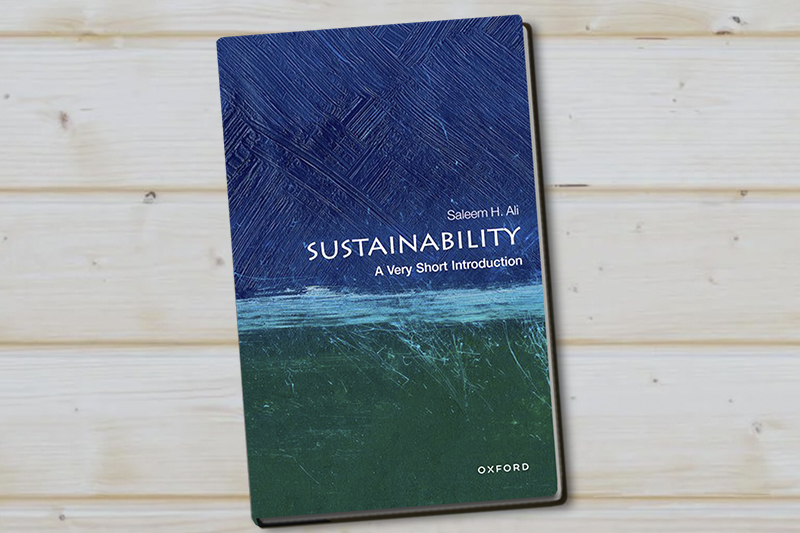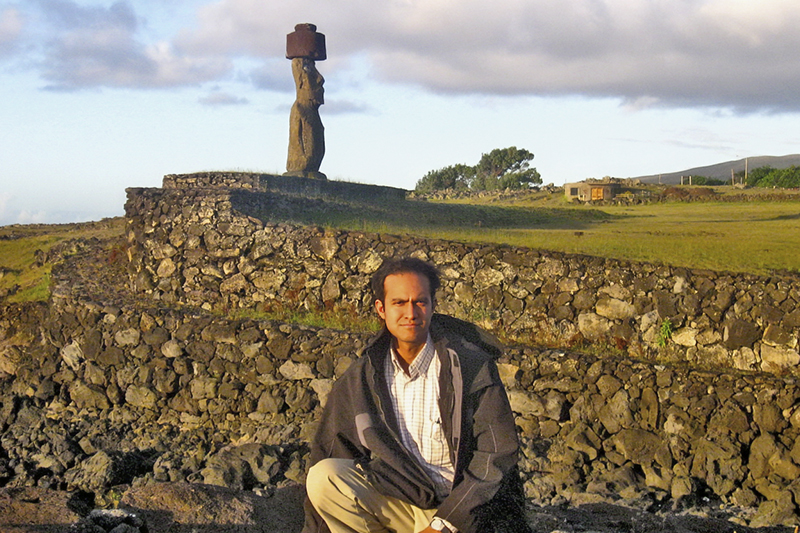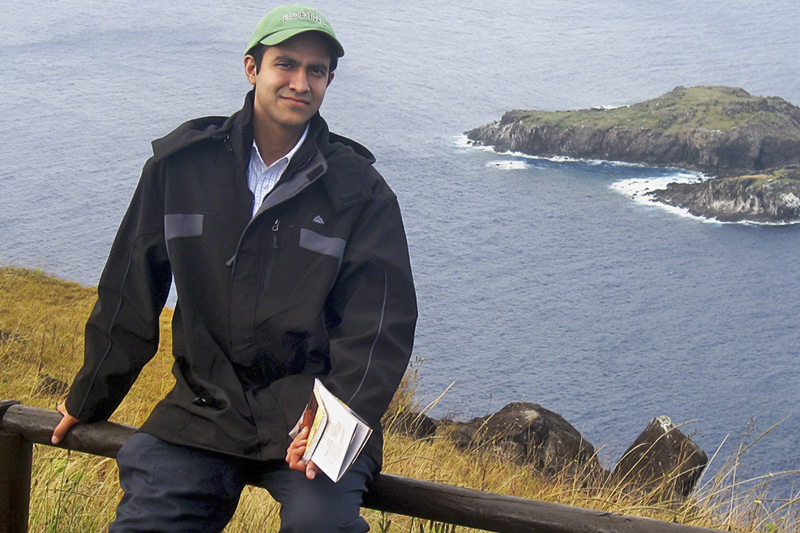
Category: Earth, Ocean and Environment

Primer on Sustainability
April 08, 2025 Written by Adam Thomas | Photos courtesy of Saleem Ali
Saleem Ali, Blue and Gold Distinguished Professor of Energy and the Environment at the University of Delaware, is the author of a new book published by Oxford University Press entitled “Sustainability: A Very Short Introduction.” The book has received endorsements from two members of the U.S. National Academy of Sciences, Thomas Dietz and William Clark as well as Tyler Prize-winning sustainability scientist Johan Rockstrom.
Ali holds joint appointments in UD’s College of Earth, Ocean and Environment and the Joseph R. Biden, Jr. School of Public Policy and Administration, was appointed to the United Nations Advisory Board of Eminent Persons on Zero Waste and is a National Geographic Explorer.
The book can be purchased on the Oxford University Press website and booksellers all over including an electronic edition which is under $10.
We reached out to Ali to learn what has motivated him to work on sustainability as a topic for research and his personal journey relating to this concept which is often misunderstood.
How do you define sustainability?
My book looks at sustainability in the sense of how can we live our lives so that our species has an indefinite future in terms of our own behavior.
It is important for me to move away from the question I am often asked as an environmental studies educator, which is: ‘Are you optimistic or pessimistic?’ I’m neither an optimist nor a pessimist. I’m a pragmatist. I know there are lots of things we need to be very concerned about but at the end of the day, we need to find a way to adapt and make things work.
How does the public relate to the term “sustainability”?
Unfortunately, there is public confusion about this concept because the fundamental science of sustainability has not been communicated to the public. I am conscious of the fact that the term ‘sustainability’ has been misused. It means so many things.
A few years ago, Dutch researcher Juliann Kirshherr did a review of around a hundred different peer-reviewed studies on sustainability, and he found more than half of them did not even attempt to explain or define the term. They insert the term sustainability with whatever they want as their end goal for the research.
How does your book help to clear up this confusion?
Through this book I wanted to clear that clutter of confusion around definitions of sustainability. It has just become a buzzword, and I want to get people to really understand what it means in hard scientific terms.
We need to understand how natural systems function. We must understand the ways in which nature recycles resources, and the connection between materials and energy which is a very fundamental concept in physics but also has implications for sustainability.
What role will technology play in sustainability?
I look at both the limits of technology in achieving sustainability and a systems perspective on technology. The technology that can help us attain sustainability can also be a hindrance if we are not careful. Also, you need materials to make technology.
There’s this famous equation that Paul Ehrlich, an American biologist, came up with called IPAT which is impact equals population times affluence times technology. The technology variable is a bit of a wild card and that’s because technology can help you address the other two, but it can also be a problem. You can put that as a fraction with IPAT so impact equals population times affluence times bad technology over good technology.
How do you approach the controversial topic of population control?
Population itself is a variable that can impact sustainability because if you have too many people you have a carrying capacity problem. That was how environmentalists historically approached sustainability. In the 1960s, most of the environmental discourse was around when we have too many people on the planet, we will have a population bomb or a population explosion.
Environmentalists in developing countries (or the Global South as it is often called) pushed back on that, and the line of thought emerged that said, ‘Wait a minute, it's not population that's the problem, it's affluence that's the problem. You've got too much consumption. The problem is the rich people who are consuming a lot of resources.’ That's when the affluence variable came in. Yet, the reality is we need both variables in the equation and a sensible approach needs to prevent politicization of sustainability science.
How does industry fit into sustainability?
There has been a lot of work that's been done in this field of industrial ecology. Industry was seen, historically, as the way in which we were diminishing our chances to have sustainability because of pollution. Now, industry is a permanent part of our natural systems, so we need to think about how we incorporate industrial systems into natural systems.
That has led to this field of industrial ecology. My book brings industrial ecology into the mix, and I also talk about tipping points: what is irreversible, what is reversible, how does resilience play into tipping points.
The book has a section on Easter Island. Could you talk a bit about that?
Easter Island has been used a lot to describe situations where a society was not living sustainably, and they had a crash. I argue this is misunderstood because they showed a certain level of resilience, and they were able to bounce back. In fact, Eastern Islanders are still there.
They went through this process of using trees to help build these statues. They used the trees for wheels and other things and then they also were using them for firewood. So, the forests got depleted and they had some changes in their population—also due to the colonial influence where a lot of the people died of diseases. But they were able to find new ways of sustainable agriculture and they were able to bounce back. So even now, you still have people on the island which is under the control of Chile.
How does sustainability research relate to climate change?
Just as the inhabitants of Easter Island adapted to a crisis, we should also start to plan for adapting to climate change while considering sustainability criteria. There are tipping points and after that you bounce back but you may not have the same lifestyle. You might bounce back to a different normal. They changed their cultural practices, and they didn't adhere to building these things anymore. They created more sustainable agricultural practices and then they bounced back so that's the story of a population crisis that came back due to human adaptation and resilience.
How important is global exploration to understanding sustainability?
I use Easter Island as an example of how the popular narrative of Easter Island is ‘oh these people messed up there,’ and that is not correct. Before I visited Easter Island, I was also under the same kind of popular impression, but when I arrived there, I met the Native population who are often absent from popular discourse and that changed my view. I've had the good fortune to be a National Geographic Explorer and I've been to 170 countries now. So, in addition to my experience on Easter Island, I also relay some of my own experiences in the book in terms of exploring the different approaches to sustainability that communities have followed.



